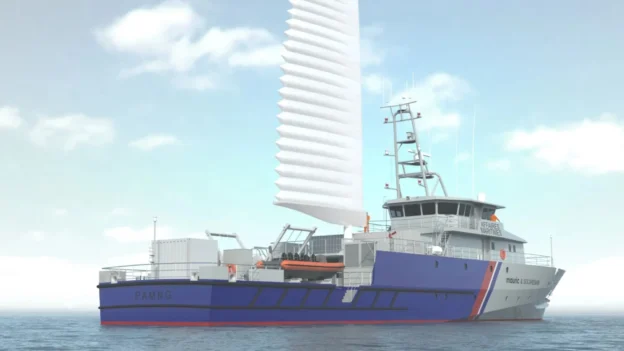At the Socarenam shipyard in northern France, the first steel cut was made for the new-generation Maritime Affairs Patrol Vessel (PAM), officially marking the start of its construction. This patrol vessel, which will integrate hybrid propulsion with wind power assistance, is intended to reinforce the surveillance and protection of France’s maritime interests in the Bay of Biscay.
The design has been developed by MAURIC’s team of marine engineers, who have optimized the bulbous bow through CFD simulations to reduce hydrodynamic drag and improve hull energy efficiency. This solution is combined with an active trim system and fin stabilizers that contribute to improved stability in demanding conditions.
A patrol vessel with hybrid propulsion
The combination of a diesel-electric system with wind-assisted sails wind-assisted sails will enable the vessel to maintain a cruising speed of 10 knots and reach over 18 knots at maximum power. It will also have a range of 3,600 nautical miles, making it capable of prolonged missions without the need for refueling.
The detailed engineering phase allowed to establish an assembly strategy by modular blocks. The first block, corresponding to the bow third, is being fabricated at Socarenam and its progress is on schedule, with final delivery scheduled for the second half of 2027.
The patrol vessel will operate with a crew of 16 people and 4 special forces personnel, being capable of being at sea up to 200 days a year. Among its main missions are fisheries control, environmental monitoring, search and rescue operations and regulatory compliance in coastal and offshore areas.
This project, promoted by the DGAMPA, reinforces the response capacity of the French Maritime Administration to the current challenges of the marine environment. The incorporation of clean technologies positions it as a model within the state fleet in terms of energy efficiency and reduction of environmental impact.
Source and photo: MAURIC

